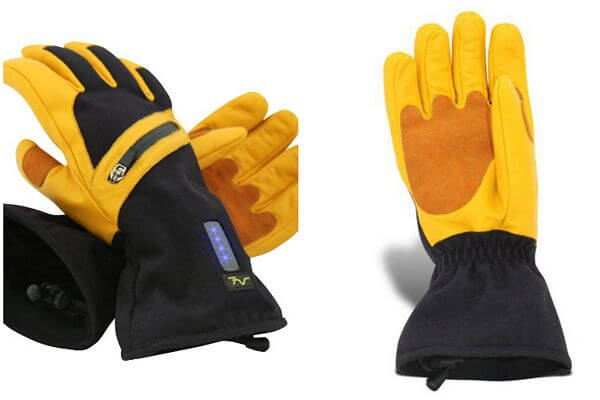Working in cold environments can be challenging, but with the right gear, you can stay warm, comfortable, and protected. One of the most crucial pieces of equipment to consider is a reliable pair of winter gloves. Proper hand protection is essential to prevent frostbite, maintain dexterity, and enhance productivity in cold working conditions.
In this article, we will cover everything you need to know about choosing the perfect winter gloves for working in cold environments.
Understanding Cold-Weather Glove Materials
When selecting winter gloves for cold working environments, it’s important to consider the materials used in their construction. Here are some key materials to look for:
- a) Insulation: High-quality insulation materials such as Thinsulate™ or synthetic down provide excellent warmth while allowing for dexterity.
- b) Outer Shell: The outer shell should be durable, water-resistant, and windproof. Look for materials like nylon, polyester, or leather to keep your hands dry and protected from the elements.
- c) Lining: Gloves with soft and comfortable linings, such as fleece or brushed tricot, add an extra layer of warmth and insulation.
- d) Waterproofing: In wet or snowy conditions, gloves with waterproof membranes or coatings help keep your hands dry and maintain their warmth.
Types of Winter Gloves for Cold Work Environments
Consider the following types of winter gloves specifically designed for working in cold environments:
- a) Thermal Gloves: Thermal gloves are insulated and designed to provide optimal warmth in low temperatures. They are suitable for general cold-weather work and offer a good balance between dexterity and protection.
- b) Waterproof Gloves: For those working in wet or snowy conditions, waterproof gloves are essential. They are designed to keep your hands dry, preventing discomfort and potential cold-related injuries.
- c) Cold-Weather Mittens: Mittens provide superior warmth compared to gloves due to the shared space for fingers, allowing them to generate and retain heat collectively. They are excellent for tasks that don’t require intricate finger movements.
- d) Heated Gloves: For extremely cold environments, consider heated gloves. These gloves have built-in heating elements that provide additional warmth to keep your hands comfortable during prolonged exposure to freezing temperatures.
Key Considerations for Cold-Weather Work Gloves
When choosing winter gloves for cold working environments, there are a few essential factors to keep in mind:
- a) Dexterity: Depending on your job requirements, you may need gloves that offer a balance between warmth and dexterity. Look for gloves with pre-curved fingers or articulated designs that allow for natural hand movement.
- b) Grip: A secure grip is crucial for tasks that involve handling tools, equipment, or slippery surfaces. Opt for gloves with textured palms or coatings that enhance grip and prevent accidents.
- c) Breathability: It’s essential to choose gloves with breathable materials that allow moisture to escape. Sweaty hands can quickly become cold and uncomfortable. Look for gloves with moisture-wicking properties to keep your hands dry and prevent clamminess.
- d) Safety Features: Depending on your work environment, you may require gloves with additional safety features such as reflective accents for visibility in low-light conditions or impact-resistant padding for added protection.
Finding the Right Fit
Finding the right fit is crucial for optimal comfort and performance. Consider the following tips when selecting winter gloves:
- a) Measure Your Hand: Use a measuring tape to determine your hand size. Measure around your palm, excluding the thumb.
- b) Check the Sizing Chart: Each glove manufacturer typically provides a sizing chart. Compare your measurements with the chart to find the right size.
- c) Flexibility and Adjustability: Look for gloves with adjustable wrist closures or elasticized cuffs to ensure a secure and customized fit. This will help prevent gloves from slipping off during work and keep cold air from entering.
- d) Layering: Depending on the temperature and your specific needs, you may want to consider layering gloves. Liner gloves can be worn underneath heavier gloves for added insulation, or you can opt for gloves with removable liners for versatility in varying weather conditions.
—
Working in cold environments requires the right gear to stay warm, comfortable, and protected. Winter gloves are a crucial part of your cold-weather work attire. Consider the materials used in their construction, such as insulation, outer shell, lining, and waterproofing, to ensure optimal warmth and protection.
Choose from various types of winter gloves based on your specific needs, including thermal gloves, waterproof gloves, cold-weather mittens, and heated gloves. Each type offers unique features designed to enhance your comfort and productivity in cold working conditions.
Keep in mind the key considerations of dexterity, grip, breathability, and safety features when selecting your gloves. These factors will ensure that your gloves are suitable for your work tasks and provide the necessary protection and functionality.
Finding the right fit is essential for comfort and performance. Take accurate measurements of your hand and consult the sizing chart provided by the manufacturer. Look for gloves with flexibility, adjustability, and layering options to customize the fit and cater to changing weather conditions.
Investing in high-quality winter gloves for working in cold environments is a wise decision that will pay off in the long run. Your hands are valuable assets, and protecting them from the harsh cold is essential for your well-being and productivity. So, gear up, stay warm, and tackle your cold-weather work with confidence!

For over 12 years, I have been testing and reviewing heating technologies that overcome cold weather conditions. In recent years, I have specialized in the heated apparel. I’ve made it my mission to educate people about heated clothing.
